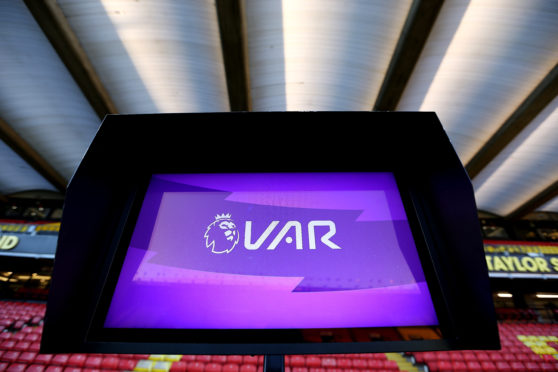Some of the changes in professional football in recent times are making a mockery of the game.
I’ve been generally in favour of VAR but the disallowed goal for offside against Crystal Palace’s Jordan Ayew in the match with Manchester United this week was proof that this element of the game is now actively seeking to find mistakes, rather than rule them out.
The call to chalk the goal off was measured literally in fractions of an inch.
Between the built-in error range of the technology and the call as to when the pass left the foot of the player passing the ball, the situation has reached farcical proportions.
It’s creating a jobsworth mentality and a culture of compliant idiocy in determining offside decisions.
The technology, brought in initially to correct ‘clear and obvious errors’, is now so busy scanning for infractions of such incredibly fine margins, that it’s making a laughing stock of a referee’s role.
The use of VAR in hand ball decisions is another example of a law of the game, which has developed from the best of intentions to a position where it’s now as clear as haar rolling up the Tay.
Other areas of contention are Financial Fair Play (FFP) rules, which Manchester City rode roughshod over last week, and the introduction of the use of all five substitutes.
The subs rule is theoretically temporary and for player welfare but will simply allow the richer clubs, who can afford much bigger squads, to prosper at the expense of less well-off outfits.
Goal line technology is one area which has proved its worth but that’s an objective decision – the ball is either over the line or not.
The expense has kept Scottish football VAR free. Perhaps that’s turning out to be a bonus.
Last week’s column, in which I used the term ‘old school’ in reference to some football managers, drew an interesting response from some folk.
It’s a description which some people take as a compliment but which others bridle at, thinking it’s a form of insult.
At the media conference when John Brown was unveiled as Dundee FC new manager, I was asking him a question and suggested that some folk saw him in such a light.
I was actually about to throw him a bone as they say in the trade; offering him the opportunity to express the many solid attributes of that genre, such as hard graft, dedication, good time keeping, and attention to detail.
However, just as the road to hell is paved with good intentions, so too my question brought out the devil in ‘Bomber’ who assumed that I was suggesting he was some kind of dinosaur.
He bridled and launched a sharp volley of insults about my dress sense among other things.
Fortunately, like many a boy brought up a Dundee housing scheme, I have skin which a rhinoceros would envy, and to mix the animal metaphors, it was water off a ducks back.
When it comes to criticism in football journalism, being old school is a requisite of the job.
In this trade you have to roll with the punches.



